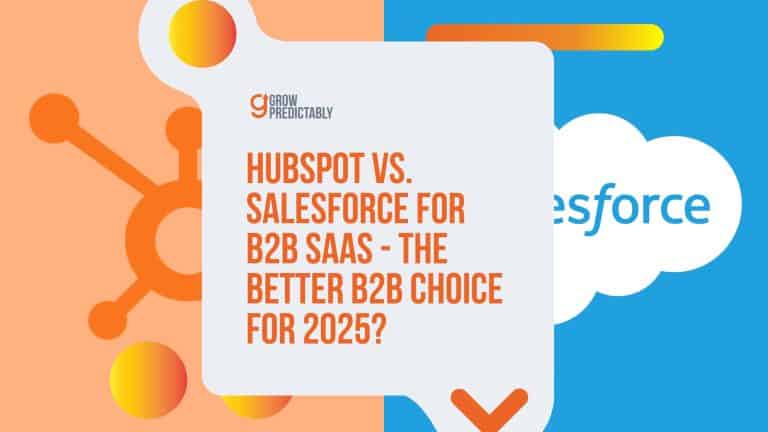AI Content Ideation for B2B SaaS – 5 Steps From Bottleneck to Breakthrough
Is your publishing velocity tanking?
It’s not your writers—it’s your system.
Most B2B SaaS teams get trapped trying to brainstorm their way out of a broken process.
But AI-driven ideation flips that.
One client jumped from 2 blogs a month to 12—with fewer hours and better leads.
Think this is about ChatGPT writing your blogs?
It’s not.
It’s about building a scalable idea engine you control and knowing the content formula that B2B content marketers must always keep in mind.
This formula keeps B2B content marketers effective.
Do you have a clue already?
If not, keep reading and find out how you can tackle AI content ideation for B2B SaaS.
Recognize the Content Ideation Bottleneck in B2B SaaS
Picture this: Your marketing team sits around a table, staring at next quarter’s empty content calendar.
Someone suggests recycling last year’s blog posts.
Another teammate mumbles about “running dry on ideas.”
Sound familiar?
The Common Struggle
You’re not alone.
Right now, countless SaaS marketing teams face this exact struggle – what I call the content ideation bottleneck.
When marketing teams face bottlenecks in content creation, that could mean a plateau.
It’s that frustrating gap between knowing you need fresh, engaging content and actually coming up with ideas that drive real business results.
Why B2B SaaS Companies?
Let’s break down why this bottleneck hits B2B SaaS companies especially hard:
- Complex buyer journeys that can stretch 6-18 months
- Technical depth requirements that go way beyond surface-level content
- The constant pressure to lower customer acquisition costs
- Multiple decision-makers need different content types
- Traditional content creation methods often struggle to keep up
It’s like trying to fill an Olympic-sized pool with a garden hose – the demand for content keeps growing, but the flow of fresh ideas stays thin.
The Pain Points
The real pain shows up in three ways:
- Your team burns precious hours in brainstorming sessions that yield minimal results
- Content quality drops as you rush to “just get something out”
- Lead generation slows because your content isn’t hitting the right pain points
I’ve seen SaaS companies pour thousands into content creation, only to watch their conversion rates stay flat.
Why?
Because without solving the ideation bottleneck first, you’re basically building a house on shaky ground.
But here’s the exciting part: This bottleneck isn’t a permanent roadblock.
In fact, the rise of AI-powered content ideation is changing everything about how successful SaaS companies approach this challenge.
The Potential of AI
Think about it – what if you could leverage AI tools to:
- Generate targeted content ideas that match exactly what your buyers need at each funnel stage?
- Increase ideation efficiency by 40x while improving content relevance? (Source)
- Scale your content operation without scaling your team size?
The transformation possible through AI-powered content ideation isn’t just helpful – it’s becoming essential for SaaS companies wanting to stay competitive.
And the best part?
The AI tools and technology to make this happen exist right now.
Ready to discover how AI flips this bottleneck into a breakthrough?
The next section walks through the new rules of integrating AI in content ideation powered by machine learning.
But first, ask yourself: How much time could your team save with a systematic approach to generating winning content ideas?
How AI Transforms Content Ideation for B2B SaaS
You know that nagging feeling when you’re staring at a blank content calendar?
That’s about to change.
Let me share something exciting that happened with one of my SaaS clients last month – they went from publishing 2 blog posts per month to 12, while cutting their planning time in half.
AI’s ability to streamline ideation is reshaping how B2B SaaS companies think about content creation.
But here’s the key – it’s not just about churning out more content.
It’s about creating smarter, more targeted pieces that actually drive results.
Here’s what’s happening behind the scenes:
- 📊 Speed meets precision: Modern AI tools scan thousands of data points – from customer conversations to market trends – in minutes. This means you’re not just getting random ideas; you’re getting insights backed by real behavior patterns.
- 🎯 Personalization at scale: The AI looks at different segments of your target audience and suggests content that speaks to their specific pain points. A CTO needs content different from that of a marketing VP, right?
- ⚡ Quick adaptation: When market conditions change or new product features launch, AI helps you pivot your content strategy fast. No more waiting for quarterly planning sessions.
But I know what you’re thinking – “Will AI make our content sound robotic?”
Good question!
The truth is, AI works best as your brainstorming buddy, not your replacement.
Think of it as having a super-smart research assistant who never sleeps.
Let’s look at some real numbers:
- Companies using AI for their content report accelerated ideation and improved creative process.(Source)
- Professionals who work with AI can produce ideas at a rate of 800 ideas per hour. (Source)
- 71% of AI use in content marketing is spent on content ideation. (Source)
The magic happens when AI handles the heavy lifting of research and initial ideation, freeing up your team to focus on strategy and creativity.
You’re not replacing human creativity or insight – you’re supercharging it.
But here’s the thing – just having AI tools isn’t enough.
Integrating AI into your workflows requires a solid process to make them work for your specific SaaS context.
Ready to see exactly how to put this into action?
That’s coming up next – and trust me, it’s simpler than you might think.
THE FORMULA FOR THE IDEAL B2B CONTENT IDEA
One thing B2B content marketers should never forget about effective B2B SaaS content—especially when generating bulk ideas—is this:
Every content idea must be grounded in real customer pain points and demonstrate how your SaaS addresses those pains.
Even when ideating at scale, resist the temptation to focus on trends, generic tips, or topics unrelated to your product’s unique value.
Effective B2B SaaS content doesn’t just inform or entertain; it positions your solution as the answer to specific business challenges your target audience faces.
This ensures that every piece you publish is not just more likely to attract the right audience, but also advances them meaningfully along the buyer’s journey.
The formula:
Real Customer Pain + How Your B2B Provides Relief = Ideal B2B Content Idea
Straightforward Guide to Using AI for B2B SaaS Content Ideation
Are you stuck in the endless loop of quarterly content planning?
I understand – building fresh strategies from scratch can be draining.
But what if you could flip this challenge into an opportunity?
Let’s walk through a smarter approach that starts with your customer and ends with scalable results.
1. Map Your Customer DNA
Pull out your CRM data, support tickets, and sales call recordings. What patterns jump out?
Look for:
- Common questions prospects ask
- Pain points that trigger buying decisions
- Goals they’re chasing
- Fears holding them back
Create a simple spreadsheet tracking these insights. They’ll power your AI prompts later.
Better Results with the Customer Avatar Canvas
Here’s where your insights become even more valuable: By pairing this data with a Customer Avatar Canvas, you carve out a detailed, living profile of your ideal customer.
The moments and triggers you log aren’t just raw data points—they directly map to specific segments and before/after states in the Canvas.

Here are three elements found in the Customer Avatar Canvas that can help users get better results when using AI to generate B2B SaaS content ideas:
- Demographics and Psychographics: The Customer Avatar Canvas involves building a detailed profile of your ideal customer, which includes key demographic (e.g., job title, company size, industry) and psychographic (e.g., motivations, goals, challenges) information. Using these details in your AI prompts helps you craft highly tailored content ideas that speak directly to your target audience’s real-world situations.
- Specific Customer Needs and Pain Points: The canvas encourages users to identify the specific needs and core pain points of their ideal customer. By integrating these insights into your AI prompts, you can generate content angles, topics, and resources that address what matters most to your prospects, making the content immediately more relevant and actionable.
- ’Before/After’ Transformation: One unique feature of the Customer Avatar Canvas is capturing the customer’s state before and after experiencing your product or service. Including this transformation in your prompts guides the AI to suggest content ideas that illustrate tangible business value, customer outcomes, and success stories—powerful content themes that resonate strongly in B2B SaaS.
This means when you, or your team, use AI to generate content ideas later, you’ll prompt tools with personas and stories that feel real and relevant.
This combination supercharges your content’s ability to resonate, increasing engagement and conversion rates by speaking straight to the heart of your users’ biggest challenges and aspirations.
2. Leverage Three AI Content Power Tools
When supercharging your B2B SaaS content ideation, the right tool makes all the difference.
Here’s my go-to AI stack for distinct needs:
- ChatGPT: For rapid-fire brainstorming, topic lists, and first drafts, ChatGPT is the undefeated champion. I use it when I need a burst of ideas in minutes—think: “List 10 unique angles for an article about SaaS onboarding.” Its speed and context flexibility mean you can iterate on prompts, pivot instantly, and get broadly creative fast—ideal when prepping outlines or campaign rough drafts.
- Perplexity: Whenever deep research is non-negotiable, Perplexity’s knowledge graph shines. It excels at synthesizing industry reports, comparative analyses, and summary content, making it indispensable for digging into trends, competitor moves, or complex technical topics in SaaS. These are not just surface-level responses but also well-sourced, nuanced briefs you can trust.
- AlsoAsked: For mapping out the hierarchy of real user questions, I turn to AlsoAsked. This tool visualizes how people structure and relate their queries, revealing hidden subtopics and content clusters around your main idea. By uncovering related and follow-up questions, it helps you identify gaps in your content strategy and ensures your SaaS articles answer what buyers genuinely want to know.
Example Stack in Action:
Suppose your CRM shows “SaaS integration pain points” as a trending issue. You’d use ChatGPT for creative headline ideas, Perplexity to pull stats or examples from real businesses, and MarketMuse to see which integration angles haven’t been covered (but should be).
3. Use This Targeted AI Prompt to Accelerate Content Ideation
Getting the most from AI means knowing how to ask the right questions.
A carefully crafted prompt ensures you get relevant, actionable content ideas that resonate with your niche audience.
Here’s where you can plug in the prompt for your preferred AI tool:
“I want to generate a large set of high-value content ideas for my B2B SaaS company, but I only want highly relevant topics based on my audience’s real pain points—not generic, random content.
Please follow these steps:
- Ask me to specify my target audience as narrowly as possible (job title, industry, company size, etc.).
- Help me brainstorm 6 “topic buckets”—key responsibility areas or interests my target buyers care about.
- For each bucket, generate 10 specific daily pain points or questions that person would have in that area.
- Next, ask me how closely our product solves each pain point, and help me prioritize the list.
- For each question, suggest 5 different content angles, approaches, or story types I could use to address that question.
- Present the ideas in a structured way so that I can easily see which channel (SEO, LinkedIn, or podcast) each idea would work best for, and suggest ways I can adapt each idea to fit all three channels.
Let’s start! The target audience for my B2B SaaS is: [INSERT YOUR AUDIENCE DESCRIPTION HERE]. Please prompt me for the next step.”
This prompt is your shortcut to scaling up quality content ideas that actually move the needle for your business.
4. Review and Prioritize with Human Judgment
AI will surface a mountain of content ideas, but not all of them will drive real value for your business or your audience.
This is where you switch gears from idea generation to strategic selection.
It’s crucial to prioritize topics that speak directly to the problems your SaaS product is built to solve. Why?
Because this focus ensures your content attracts the right prospects, sets accurate expectations, and creates a direct path from content consumption to product adoption.
When you create resources that answer the exact pain points your platform addresses, you’re not just generating traffic—you’re nurturing leads that are far more likely to convert.
Here’s my actionable approach…
Each week, I review the list of AI-generated topics, suggest relevant keywords, and score them by three factors:
- Relevance to User Pain: Does this idea align with an urgent challenge your solution addresses?
- Uniqueness: Is the angle differentiated or saturated in your niche?
- Product Alignment: Does this topic naturally lead back to your product’s strengths or core features?
You can also review each B2B content idea using a scorecard that helps you prioritize each idea using the three factors above.
Check out the example below, which scores three examples of B2B content ideas.

By advancing only those topics that check all three boxes—especially a strong fit with your solution—you maximize the ROI of your content operation and ensure every published piece is a step toward onboarding another ideal customer.
How to Use This Scorecard:
- After AI or team ideation sessions, list content ideas in your scorecard.
- Score each idea on the three criteria (use the 1–3 scale).
- Categorize each idea by Priority Level, Content Type, and Funnel Stage.
- Focus resources on High Priority items, but keep Medium and Low Priority ideas for future use or repurposing.
This simple, structured method keeps your B2B SaaS content efforts focused on what truly moves the needle for your content marketing efforts.
Example:
Recently, after reviewing AI-suggested topics, we prioritized “Reducing Onboarding Friction for Mid-Sized Tech Teams”—a challenge our SaaS platform simplifies expertly. By focusing on this intersection, our resulting content didn’t just educate, it prompted demo requests and high-intent conversations.
5. Organize Everything into a Content Calendar
Transforming scattered content ideas into a winning marketing roadmap starts with a well-organized content calendar.
An effective calendar adds clarity, accountability, and strategic focus to your process—helping your team move from idea overload to a reliable publishing engine that nurtures buyers at every touchpoint.
The Simple Spreadsheet Method
If you want a quick setup with a minimal learning curve, a spreadsheet solution is a tried-and-true favorite.
You can either use Microsoft Excel or Google Sheets for this.
Here’s one example from Gracia Klaijnen in one of her Medium blogs on social media editorial calendars. (Source)

Gracia went extra on this one by attaching an actual calendar to help users track their releases.
REMEMBER: Content calendars are customized to how you use them. Hence, they should include what’s most important to your business.
It doesn’t have to be like other content calendars, but of course, you can take inspiration, like from the example we provided above.
Here’s how to do it:
- Open Google Sheets or Microsoft Excel and create a new document.
- Set Up Your Columns: Add columns for:
- Content Idea/Title
- Content Type (e.g., Blog, LinkedIn, Podcast)
- Owner/Writer
- Due Date
- Publish Date
- Channel/Platform
- Status (e.g., Planned, In Progress, Posted)
- Notes or Links (for draft docs or resources)
- Input Your Prioritized Ideas: Populate rows with your best AI-generated or team-curated topics.
- Assign Owners and Deadlines: Designate responsible team members and realistic deadlines to keep everyone accountable.
- Color Code for Clarity: Use conditional formatting or highlights to make status, ownership, or priority visually clear at a glance.
- Share and Collaborate: Grant editing access to everyone involved, so your calendar is always up to date.
Bonus Tip: For recurring meetings, use filters or dropdown menus to sort content by channel or publication date—perfect for quick checks in editorial meetings.
Use Tools Designed for Content Organization
If you’re ready for next-level organization, advanced platforms offer automation, visualization, and team collaboration features that spreadsheets can’t match.
Just look at how clean this one content calendar made with Notion looks.

Here are three of the best content calendar tools for B2B SaaS teams in 2025:
1. Trello
- Create a new board dedicated to your content calendar.
- Set up lists for stages (Ideas, Writing, Editing, Ready, Published).
- Add cards for each content piece, attaching due dates, labels (channels), owners, and checklists.
- Use the Calendar Power-Up to visualize your schedule and due dates on a calendar view.
- Invite team members and assign them to cards for seamless collaboration.
2. Notion
- Create a new Notion page titled “Content Calendar.”
- Use the built-in Database feature to create a table with fields for Title, Content Type, Owner, Publish Date, Channel, and Status.
- Switch to the Calendar view to visualize upcoming publishing dates.
- Add new content ideas as database entries, assign to team members, and update statuses as you progress.
- Use collaborative features—comments, mentions, and checklists—to manage workflow, feedback, and deadlines all in one workspace.
3. CoSchedule
- Sign up and select the content calendar feature.
- Add team members and define roles (writer, editor, manager).
- Create projects for each content piece—assign dates, attach briefs, and track progress through the workflow pipeline.
- Take advantage of real-time analytics to see which scheduled topics drive the most value, and adjust your content plan accordingly.
No matter which route you choose, an organized content calendar is a game-changer.
It enables strategic content planning, smooth execution, keeps everyone aligned, and lets you spot opportunities or gaps before they impact your strategy.
Start simple and scale up—what matters is building a dependable publishing rhythm that delivers value to both your buyers and your business.
This workflow isn’t about letting AI run wild—it’s about channeling machine creativity through the lens of lived customer insights, thoughtful frameworks, and real human judgment.
Are you ready to pick the perfect AI tools for your stack? That’s coming up next.
Remember: This isn’t about replacing your team’s creativity – it’s about giving them superpowers.
Combine AI Efficiency with Human Creativity for Maximum Impact
Imagine a growth-stage CMO staring at her screen.
Her team just cranked out 50 blog posts using AI in record time. The problem?
They read like everyone else’s content. Zero personality. No spark.
No real connection with their audience.
Here’s the truth: AI supercharges your content creation, but magic happens when you blend it with human creativity.
Let’s dig into making this work.
The Perfect Partnership
Think of AI as your brainstorming buddy and research assistant rolled into one.
It handles the heavy lifting in the content creation process:
- Quick-fire topic generation
- Data gathering
- First-draft outlines
- Headline variations
You and your team bring the secret sauce:
- Strategic direction
- Brand personality
- Emotional resonance
- Industry expertise
- Real-world examples
Here’s a simple action plan to make this all work.
1. Set Clear Roles
- AI is for Research, data, and structure
- Human intervention is for Strategy, voice, and final decisions
2. Build Your Review Loop
AI Draft ➡️ Human Review ➡️ Brand Check ➡️ Final Polish ➡️ Publish
3. What You Need to Avoid
- Content that feels generic
- Missing industry context
- Facts don’t check out
- Lost brand voice
Quick Tips for Better Results
💡 Feed your AI tools with specific examples of your best content
💡 Create prompts that include your customer’s actual language
💡 Schedule regular team reviews to keep content aligned with strategy
Quality Control Checklist
✓ Does this sound like us?
✓ Would our customers find this helpful?
✓ Are we adding unique insights?
✓ Do examples match our audience?
Three Marks of Teams Who Get It Right
When teams work on your content ideation, ensure that your team always meets these criteria:
- Clear Guidelines: They document exactly how AI fits their content workflow
- Strong Ownership: Everyone knows their role in the content process
- Regular Check-ins: Monthly reviews keep content quality high and consistent
AI helps you work faster, but your creativity makes any content creation process outcome worth reading.
Ready to see how this balanced approach works across your entire customer journey?
That’s coming up next.
FAQs
From Bottleneck to Breakthrough
The content ideation bottleneck isn’t unique to your SaaS team—but ignoring it could quietly stall your growth.
We’ve discussed how AI can revolutionize your content creation, turning stagnant brainstorming sessions into idea machines.
With the right tools like ChatGPT, Perplexity, platforms like AlsoAsked, and a human-led strategy layered on top, your team can scale content without burning out your bandwidth.
Now’s the time to act.
Embrace this transformation not just as a productivity hack, but as a competitive advantage.
Start your journey today by running an AI-powered content audit or exploring the AI tools featured above.
How much potential could you unlock if your team had 10x more relevant content ideas each month?
The future of SaaS marketing lies in combining machine precision with human creativity.
Don’t let your team fall behind while others leap forward.








